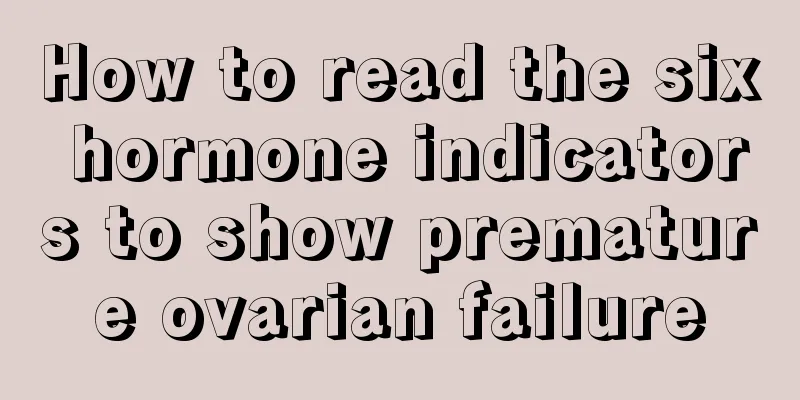How to read the six hormone indicators to show premature ovarian failure

|
Premature ovarian failure refers to the loss of ovulatory function of the uterus and ovaries before the age of 40, which leads to a significant decrease in female hormones and causes amenorrhea. Therefore, to diagnose premature ovarian failure, one must first look at the menstrual period, second, see whether the uterus and ovaries have ovulation, and third, six sex hormone tests can be used as an auxiliary diagnosis. Next, let’s discuss how to read the six hormone indicators to show premature ovarian failure? I hope ladies can understand the interpretation of these aspects. Premature ovarian failure refers to the fact that the uterus and ovaries are forced to fail to function, which will cause women to enter menopause early, have infrequent menstruation, and easily affect pregnancy. The diagnosis of premature ovarian failure requires the integration of clinical manifestations, six sex hormones and anti-Mullerian growth hormone. When the estrogen 6-item test for premature ovarian failure is performed, the specific manifestation is that the ratio of luteinizing hormone to follicle-stimulating hormone is above 2.0, and the levels of estrogen and estradiol are relatively low. In addition to being under 40 years old, premature ovarian failure also has symptoms of amenorrhea. The results of six sex hormone tests need to be checked twice (more than one month) to show FSH>40MIU/ml. If you meet the above symptoms, then it is very likely that you have premature ovarian failure. The uterine and ovarian atrophy caused by chemotherapy is mainly related to the patient's age and the amount of medication received. When the dose of uterine and ovarian radiotherapy and chemotherapy is ≥600cGy, almost all women over 40 years old will experience uterine and ovarian failure. Before pelvic radiotherapy and chemotherapy, the method of protecting the ovaries by suppressing egg growth through pituitary downregulation of GnRHa has not been proven effective in clinical medicine. The causes of premature ovarian failure are different, and the corresponding treatments are also different. There are many ways to treat premature ovarian failure. It is recommended to go to a reliable specialist clinic to find out the cause of the disease and adopt the corresponding treatment method. In this way, premature ovarian failure can be treated more effectively and quickly. |
<<: Can cerebral palsy be detected during pregnancy?
>>: How many days of delayed menstruation can detect pregnancy
Recommend
Is it more painful to give birth or to get kicked in the balls?
In daily life, many men like to say that they hav...
Why do I feel hot during early pregnancy?
The body temperature of pregnant women will indee...
Generally, the abdomen will hurt for a few days after the ring is removed.
If a woman who has received an IUD wants to get p...
Is it normal that I am not gaining weight in the later stages of pregnancy?
Pregnant women consume a lot of food during pregn...
Rib valgus correction in adult women
When adults have rib valgus, it may be very painf...
What is the best way to store mangoes in summer? Why do mangoes have a strange smell?
Mango is also a kind of fresh fruit that many peo...
What should I do if I have sex one week after I have had my IUD removed?
When the IUD reaches the required service life or...
How to make menstruation come faster
Menstrual health has always been an issue of conc...
Can pregnant women eat blueberries?
Blueberries are sour and sweet with high nutritio...
What should women eat to quickly enlarge their breasts?
Quickly enlarging breasts is a dream of every wom...
What are the treatments for kidney deficiency in women?
Women are also very prone to kidney deficiency. I...
Girl with flat chest
Most girls pay special attention to their figure,...
How to regulate irregular menstruation
When talking about menstruation, many girls feel ...
Is the female vagina smooth?
The vagina is a very important reproductive organ...
There is a strange smell during ovulation
The ovulation period is when endocrine secretion ...









